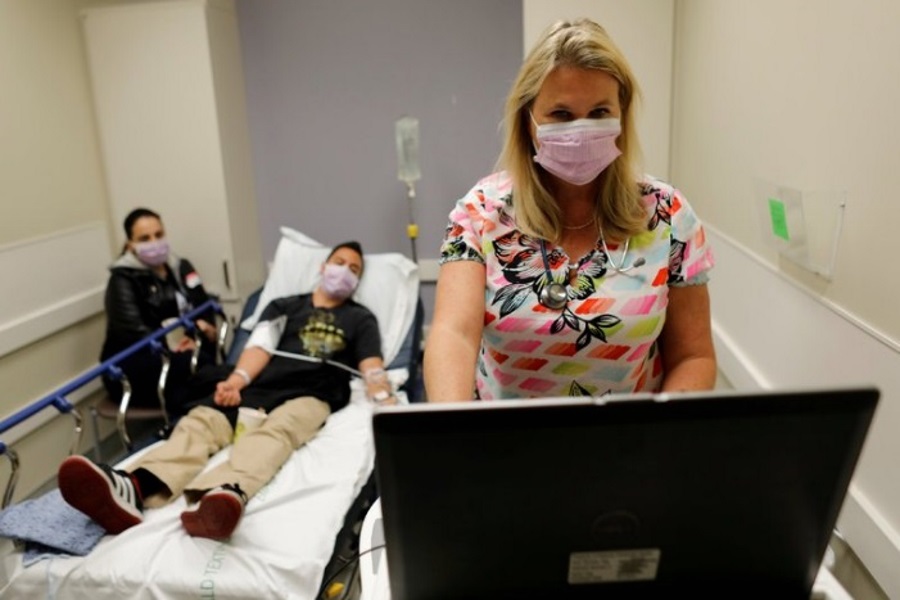The number of people diagnosed with the flu this season is worryingly increasing, becoming closer every day to the 2009 pandemic statistics. The average flu season lasts about 16 to 20 weeks, meaning there is still a long way to go since only nine weeks of this season have passed.
The death rate, just as the diagnoses, just keeps getting higher and higher. During the 2014-2015 flu season, the Centers for Disease Control and Prevention estimated 34 million flu cases around the USA, 710.000 hospitalizations and 56.000 deaths due to the illness.

The director of the organization, Dr. Daniel B. Jernigan gave a hopeless expectation for this year as well, explaining that the statistics are anticipated to equal or even surpass the 2014-2015 flu season numbers.
Weeks to come are expected to be harder, already 37 children have died from the illness, just like little Emily Muth. By the end of the 2009 flu season, 148 pediatric cases had the same outcome.
Symptoms and treatment
There’s an extensive variety of symptoms influenza-diagnosed people can present; they go from mild to severe. The usual symptoms include fatigue, headaches, muscle pains, sore throat, fever and the occasional runny nose. These symptoms appear two days after the virus has infected the body, and they usually last less than a week.
The disease becomes more of a threat when complications start to appear, such as viral or secondary bacterial pneumonia, sinus infections and developing stronger symptoms of already existing health conditions on the patient like asthma or heart-related diseases.
According to the New York Times, the dominant virus that’s spreading around this year is not a new one like AH1N1 was in 2009. In fact, it is known to be a 50-year-old circulating disease, the “Hong Kong Flu,” but this season it reached its deathly potential.
Treatments for this kind of disease involves, besides medication, getting plenty of rest, drinking liquids throughout the whole day to stay hydrated, staying away from drugs -even legal ones- that could worsen the symptoms, like alcohol and tobacco.
The medications prescribed often include paracetamol to relieve the fever and pains, and antiviral treatments. Minors diagnosed with influenza should not take aspirins since it could cause a reaction that will lead to getting a rare disease that affects the liver.
Since the virus is evolving, and in some cases, it shows resistance to the antiviral treatment, new antiviral drugs are being developed to increase the quality of the product and lower the number of mistreated patients.
Not an entirely effective vaccine, but the best there is so far
According to CBN News, this season’s vaccine has a percentage of effectiveness of only about 30%. However, doctors claim that it is the best one so far regarding avoiding the flu, and even if the disease appears, chances are it will be for a shorter period and with less severe symptoms, says Dr. Curtis.
CBN News also states that the science community is currently:
“Working on a universal flu vaccine which will protect agaisnt all strains of the virus and be given every several years or ideally, only once in a lifetime.”
This miracle vaccine is also expected to be available within years, maybe less than a decade.
The main issue related to such is that despite all attempts made by health authorities, the number of people vaccinating has declined, increasing gradually the number of unprotected and vulnerable people each year. Only about 40% of people under the “young adult” denomination has gotten a shot this year.
Do not mistake the seasonal flu with adenoviruses

Another subject of concern this year, according to CNN, is that the whole flu situation has made a gap in general knowledge regarding disease diagnoses. While the flu is a seasonal illness, adenoviruses are not, and the only existing vaccines are available just for military recruits, meaning a greater carefulness is mandatory when presenting flu-like symptoms.
Symptoms like throat pains, runny nose, and fatigue are common between the two illnesses, but infection specialist, Dr. William Schaffner, explains that adenoviruses can cause conjunctivitis, and among children, diarrhea. Other symptoms include bladder infections and bronchitis.
Just as influenza, adenoviruses could cause pneumonia and with an even more complicated outcome, it could develop encephalitis (inflammation of the brain) and meningitis (inflammation of the tissues that surround the brain).
An adenovirus infection usually lasts about ten days, according to the CDC, and when the disease is not as severe, home treatment could be enough. But still, case numbers are expected to rise since they don’t have a specific panel of tests to identify it, making it harder to diagnose the disease, according to Dr. Schaffner. He also claims this condition, in its common state, is not as dangerous as current influenza.
These two diseases are spread by having direct contact with people infected with the viruses, by coughing, sneezing or even touching a surface that the infected person touched before since the infections remain alive for extended periods.
Source: The New York Times
